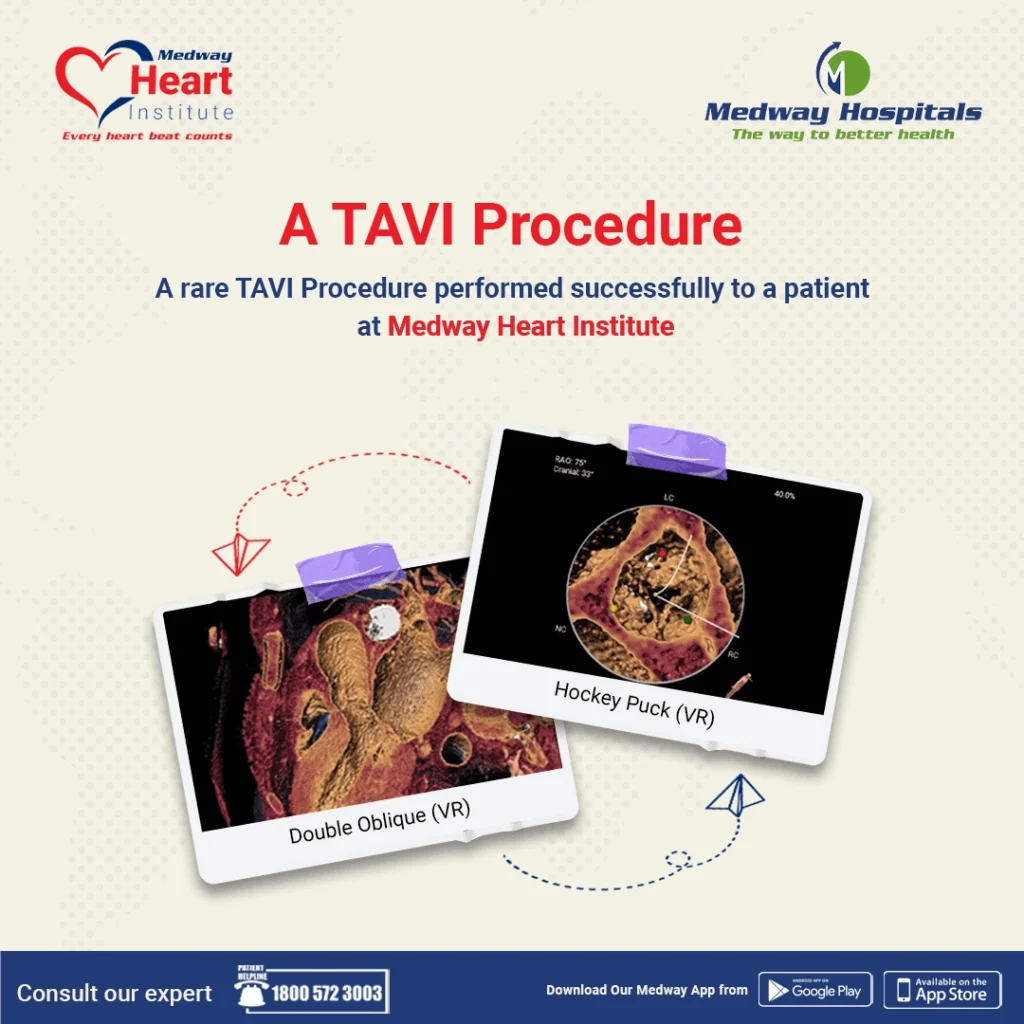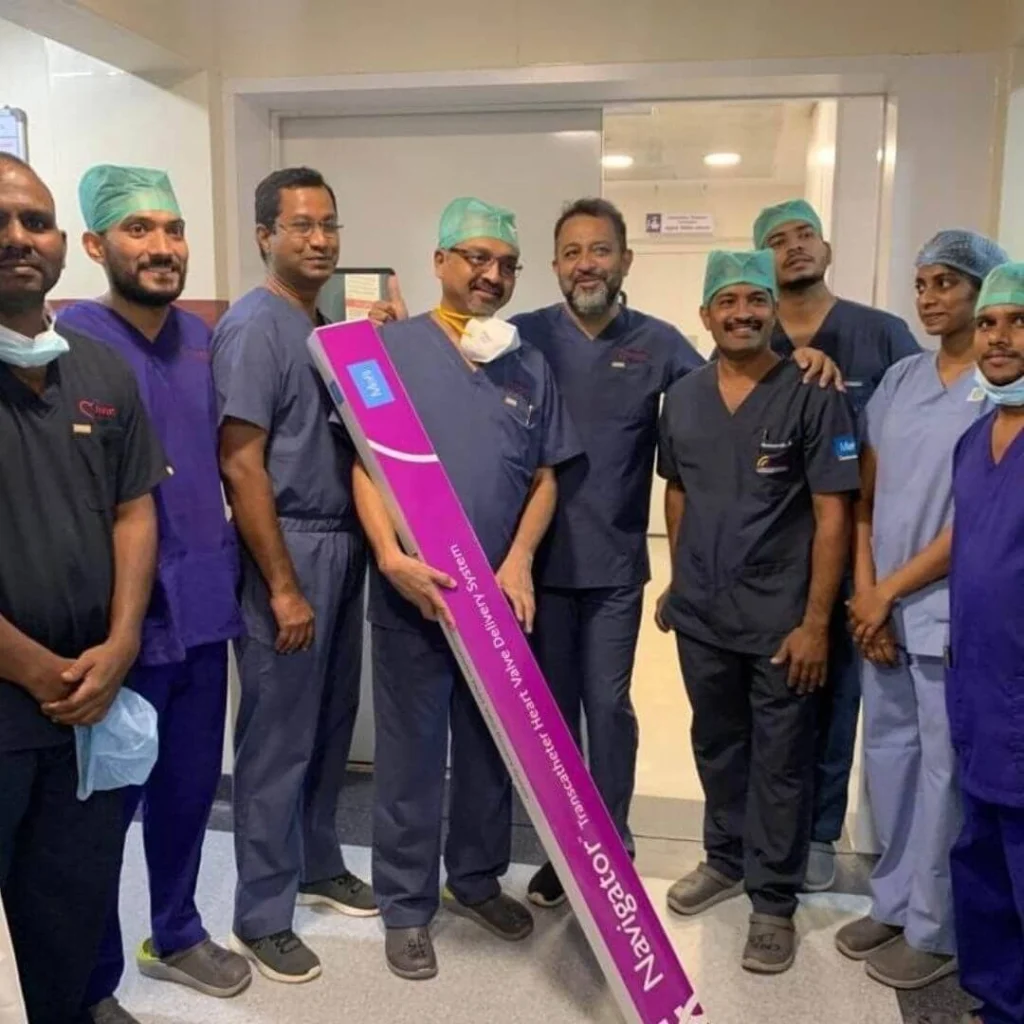
TAVI is a non – surgical replacement of aortic valve. Aortic valve is one of the four main valves in your heart. As patient grows older there is deposition of calcium upon the aortic valve with restriction of opening. This makes the heart to work harder for pumping blood out through a markedly narrowed orifice.
The usual presentation of patient is breathlessness on exertion, anginal chest pain, fatigue and giddiness or loss of consciousness.
Traditionally valve replacement is done surgically and requires open heart procedure. However there are patients who have numerous comorbidities and are not ideal for surgery owing to high risk. TAVI is performed after a detailed Heart team discussion involving Cardiologist, Cardio-Thoracic Surgeon, Anaesthetist and physician. The team decides the most ideal treatment option i.e Surgery or TAVI which is individualized for each patient depending upon their clinical condition. Procedure is done after obtaining informed consent of patient and relatives.

Mostly TAVI is performed under local Anaesthesia with conscious sedation, without need for general Anaesthesia. Post procedure patient is shifted to ICU for monitoring under close observation. Once the medical team is satisfied patient is shifted out to ward the very next day and remains in hospital for further 2 to 3 days before going home.
TAVI is a minimally invasive procedure which is performed through the groin approach with small incisions without requirement to open the chest wall. The area around the groin is numbed with a local Anaesthetic. A balloon catheter is advanced up the artery from leg and placed across the diseased aortic valve and gently inflated to open it. Thereafter a new valve using a metal mesh tube which keeps valve in place is inserted. The new valve expands either by itself or with aid of balloon. This new valve is positioned and pushes aside the damaged aortic valve. After deployment the balloon is deflated and removed.
The risks involved with TAVI are bleeding or vessel injury, abnormal Heart rhythm requiring pacemakers, damage to coronary artery needing stent placement, Aortic Valve Leakage, Stroke, Kidney Failure and Rarely Death.
Patient is given detailed instruction at the time of discharge for recovery and return to normal active life.





